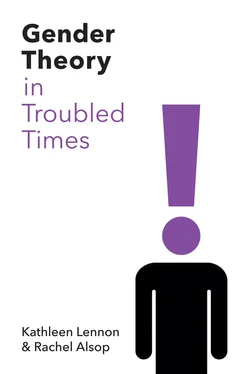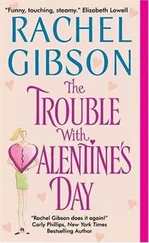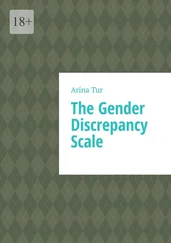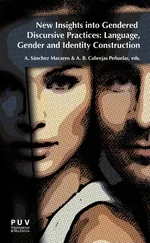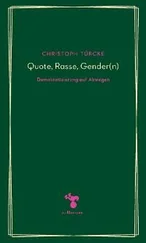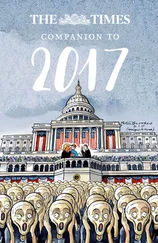ISBN-13: 978-0-7456-8301-0
ISBN-13: 978-0-7456-8302-7 (pb)
A catalogue record for this book is available from the British Library.
Library of Congress Cataloging-in-Publication Data
Names: Lennon, Kathleen, author. | Alsop, Rachel, author.
Title: Gender theory in troubled times / Kathleen Lennon & Rachel Alsop.
Description: Cambridge, UK ; Medford, MA : Polity, 2020. | Includes bibliographical references and index. | Summary: «This timely and necessary intervention revisits gender theory for contemporary times. The authors explore the multiple strands which go into making our gendered identities and refuse a singular ‹truth about gender›, resulting in the ideal critical overview»-- Provided by publisher.
Identifiers: LCCN 2019024006 | ISBN 9780745683010 (hardback) | ISBN 9780745683027 (paperback) | ISBN 9780745683058 (epub)
Subjects: LCSH: Gender identity. | Queer theory. | Sex (Psychology)
Classification: LCC HQ18.55 .L46 2020 | DDC 305.3--dc23
LC record available at https://lccn.loc.gov/2019024006
Typeset in 11 on 13pt Scala
by Fakenham Prepress Solutions, Fakenham, Norfolk NR21 8NL
Printed and bound in Great Britain by CPI Group (UK) Ltd, Croydon
The publisher has used its best endeavours to ensure that the URLs for external websites referred to in this book are correct and active at the time of going to press. However, the publisher has no responsibility for the websites and can make no guarantee that a site will remain live or that the content is or will remain appropriate.
Every effort has been made to trace all copyright holders, but if any have been overlooked the publisher will be pleased to include any necessary credits in any subsequent reprint or edition.
For further information on Polity, visit our website: politybooks.com
This book began as a second edition of our Theorizing Gender (2002) and then morphed into a new work that revisits many of the same concerns, but in a changed political and social, as well as theoretical, context. The original Theorizing Gender was written in collaboration with Annette Fitzsimons and Ros Minsky. Both are sadly no longer with us, but we remain informed by their knowledge and insights. Regretfully also gone is the Hull Centre for Gender Studies, which for thirty-five years sustained and supported the research of many scholars and activists, including our own. We pay tribute to the commitment and expertise of those who made Hull an important centre of excellence for gendered research, maintained close links with activist groups in the local community, and established and perpetuated a set of international networks. Collectively they/we promoted a commitment to internationalism and localism as key to any feminist agenda, interweaving feminist and LGBTQI+ concerns internationally with those of migration and borders. The legacy of the centre burns bright, however, in the transfer of the Erasmus Mundus GEMMA Masters of Excellence to the Centre for Women’s Studies at the University of York and the ongoing research and teaching of the centre’s alumni across the world, including within the inspiring Global Grace Project. We would also like to thank each other for many years of fruitful and enjoyable collaboration in both teaching and research.
Introduction
What is gender?
This book is about theorizing gender. So, what is gender ? When we were writing Theorizing Gender , at the end of the 1990s, the term gender was associated primarily with the psychological, behavioural and social aspects of being a man or a woman, or someone who refuses that binary. It was contrasted with the term sex , which, by many, was taken to be a marker of biological difference. In terms of the famous sex/gender distinction (which we discuss in chapter 1), sexed difference was considered as something biological (often characterized as being male or female) but gender was viewed as socially constructed, variable historically, as well as cross- and intra-culturally, and susceptible to change.
Much has happened to all the terms since then.
Theoretically, the sex/gender distinction has been further problematized (see chapter 1). The apparent givenness of biology in some accounts has been destabilized by feminist biologists, among others, and the necessity of a binary biological division into male and female challenged as itself mediated by cultural assumptions about gender and by norms of heterosexuality. On the other side, the body has been seen as central to the psychological, behavioural and social aspects of being a man or a woman. Gender cannot be pruned off as simply a matter of style . What might be considered a question of style is femininity and masculinity. Femininity would here be considered the modes of appearance and behaviour which are normatively linked, in a specific context, to being a woman, masculinity what is normatively linked to being a man.
Secondly, widely, within English-speaking countries, the term ‘gender’ has come to stand for a positioning of oneself or others as a ‘man’ or a ‘woman’, or as ‘non-binary’, without reference to the sex/gender distinction and without commitment as to whether this positioning is biological or social. It is the term used in the media and often on official forms. When your gender is asked for, what is meant is ‘Are you a man or a woman?’, with the occasional option of additional categories such as non-binary. And, to complicate matters further, the terms ‘being a man’ or ‘being a woman’ are generally used synonymously with ‘being male’ or ‘being female’, although, for some, these latter terms still carry something of their biological history.
Thirdly, the Gender Recognition Act in the UK (2004), and parallel legislation elsewhere, allows someone to change their initial assignment as man or woman, male or female, similarly without commitment to these categories being either social or biological.
What we are exploring, in this book, is the practice of differentiating people according to sexed categories, as men or women, or categories which reference this dominant binary. We could have used the terms ‘ sexed difference ’ or ‘ sexual difference ’ for this task . The latter, as we clarify in chapter 2, is associated with a particular psychoanalytically anchored theory and so was not suitable for us. We could, however, describe our enterprise as theorizing ‘sexed difference’, a term we regard as synonymous with gender. We are using ‘gender’ here, as is now widespread, to mean being positioned in relation to the categories ‘man’ or ‘woman’, a process of which we are attempting to make sense. Since the publication of Judith Butler’s Gender Trouble in 1990 (discussed in chapter 6), work exploring this process has been referred to as ‘gender theory’. That is the topic of this book.
To do gender theory we need to explore what is meant by the terms ‘man’ and ‘woman’ and other terms related to them, such as ‘male’ and ‘female’, or ‘masculine’ and ‘feminine’. We also need to consider those which reference our foundational terms, such as ‘gender fluid’ or ‘non-binary’ (discussed in chapter 7). What informs the assignment of people to these categories? And what are the consequences of such assignments? Each of these tasks is inter-implicated with the other, as Beauvoir made clear in her seminal text The Second Sex ([1949] 2010). What we mean by the terms is linked to what informs their assignment to people and the personal and social consequences of such an assignment . ‘But first, what is a woman?’ Beauvoir asks (ibid.: 5). And she recognized – and we follow her – that this question is not answered by looking in a dictionary. To answer this question, we need to look at a range of factors: the biological diversity of bodies; what is made of those bodies in familial and wider social contexts; the economic and wider social structural consequences of sexed positionality and its implications for divisions of labour and power differentials; the (variable) cultural meanings, myths and imaginaries attached to sexed difference; the practices into which we are initiated in order to reproduce differences; the intersection of gendered categories with other aspects of social positionality; and the internalization of these external factors to produce the lived experience of gender – a gendered subjectivity which gives us a sense of ourselves as female, or male, or non-binary.
Читать дальше
